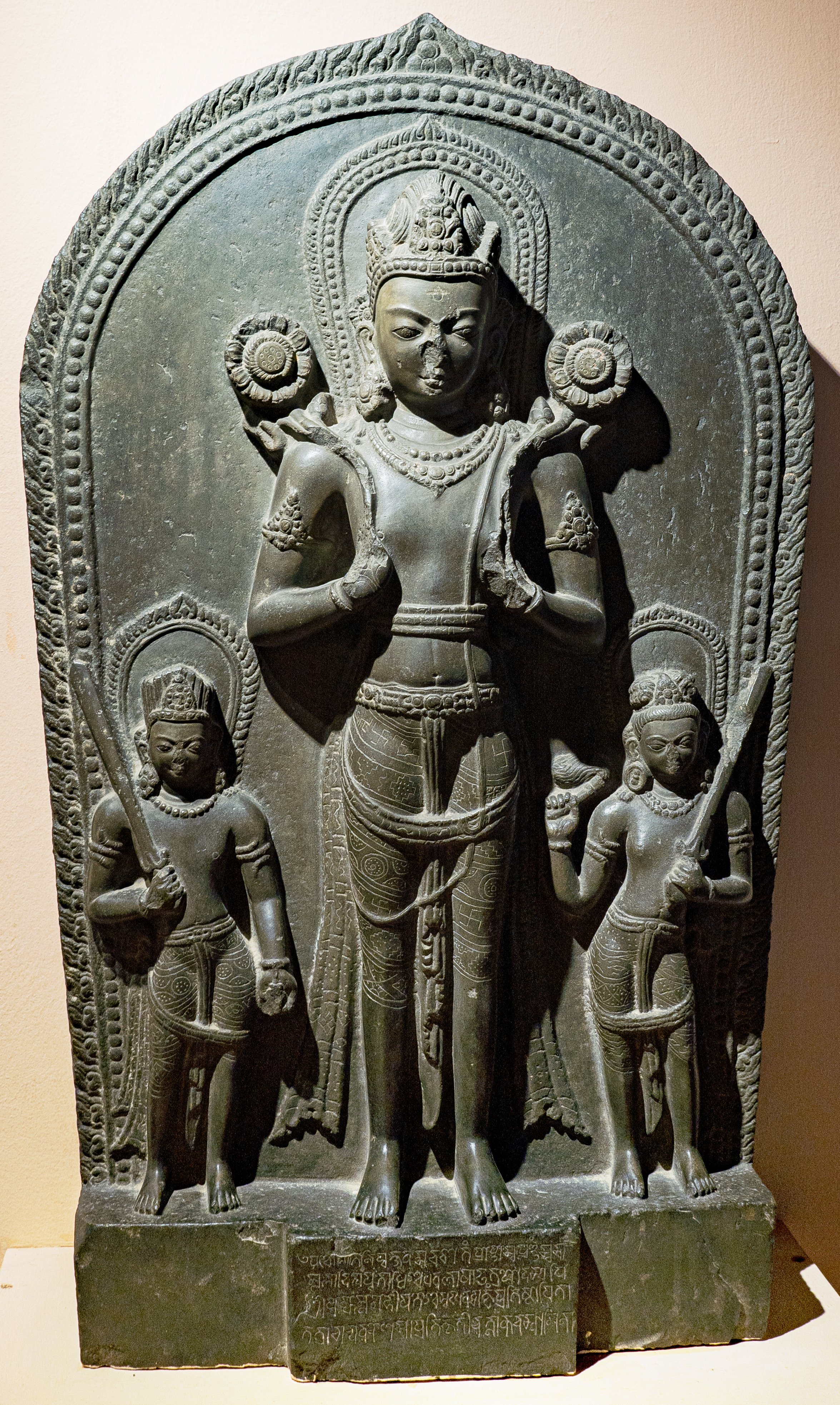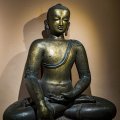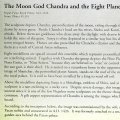Patan Museum (Nepal): photo 177
Photo 177 of 212 in Gallery: Patan Museum (Nepal)

Image title: Surya (Nepal, 11th century)
Description of the photo
This Stone sculpture shows an image of Surya (the Sun-God), from the 11th century origination from Nepal.—Materials used: Stone.
Surya, personification of the sun, stands firmly erect holding at shoulder level two emblematic full blown lotuses. He is crowned, wears rich jewelry, a sash tied around his waist, and a knee-length loincloth (dhoti). Draped from right shoulder to left knee is the sacred thread worn by males of the Brahman caste. Surya’s attendants stand beside him, on his right the scribe, Pingala, and on his left the staff bearer, Dandi.
This image originally stood at Thapahiti-tol, a neighborhood in Patan not far from the museum. There is an inscription below Surya that records the name of the donor and the date of consecration. A very similar but badly damaged image of Surya, dated 1083, may be seen in place just outside a small Vishnu temple in Saugal-tol, a short, walk east of the museum. Both images were carved at a time when Surya’s cult was particularly flourishing in Nepal. Although many images of Surya remain few are worshiped today.
Gallery information:
The Patan Museum is located on the Durbar square of Patan (Lalitpur/Lalitapura, Kathmandu, Nepal) which is associated Keshav Narayan Chowk (Keshavnarayan)—a form of Lord Vishnu. Being listed as a World Heritage Site, the whole of Durbar square is filled with exquisite temples, sculptures and other ancient structures, of which the ancient history history can be traced to the Malla Kings of Lalitpur. It is an important site for both Buddhism and Hinduism.
Photo details:
Date: 2019-12-02
Camera: SONY ILCE-6400
Exposure: 1/20
Aperture: f/5
ISO: 100
Focal length: 18mm
High resolution:
Download file
Size: 5.35 MB
Resolution: 2351 x 3931
© Photograph by Gabe Hiemstra.
License: CC BY-NC-ND 4.0

